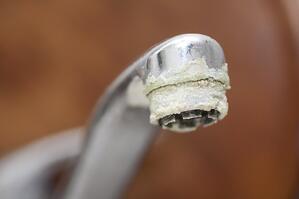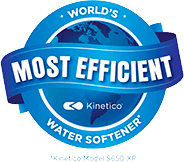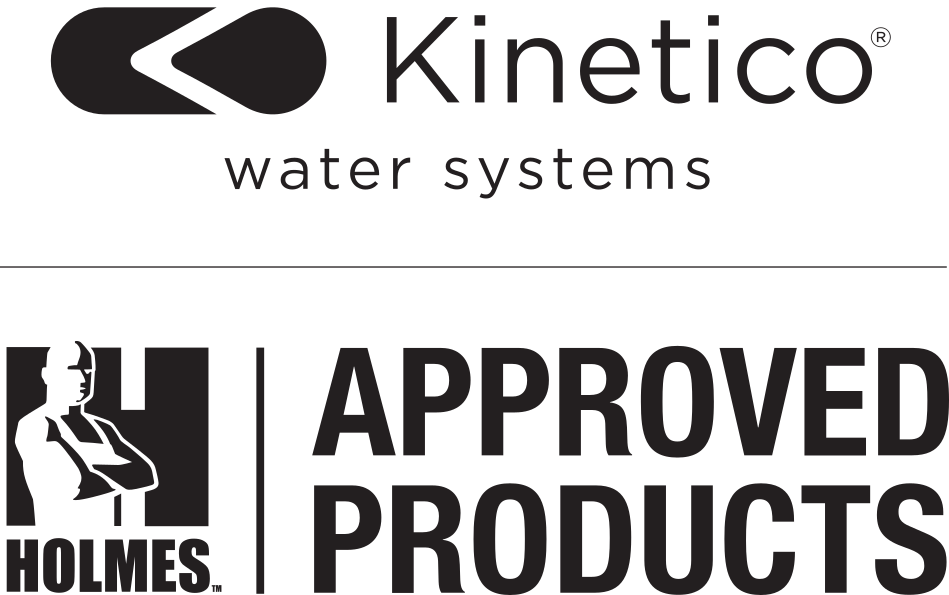Ugh! One of the disadvantages of having hard water is limescale buildup in your sinks, toilets, tubs, faucets and in places you can’t see. It’s more than ugly. Limescale can reduce the efficiency of your appliances, so they don’t perform well and they wear out faster. It can even peel the chrome off faucets and clog your plumbing.
Fortunately, there are some simple limescale removal options to fix this unattractive situation.
WHITE VINEGAR AND LEMON JUICE TO THE RESCUE!
You could head to the store to purchase any number of commercial products formulated to remove limescale buildup, or you could save money by using white vinegar or lemon juice instead. Limescale is calcium carbonate — alkaline deposits left behind by the minerals in your hard water. The acid in vinegar and lemon juice dissolves the deposits. Not instantly, though. The process can take a little time, but you’ll like the results.
Here’s how to use vinegar or lemon juice for limescale removal. (When we say vinegar, we always mean white vinegar.)
- Preventive maintenance
Fill a spray bottle with equal parts white vinegar and water. You can keep limescale from building up by regularly spraying bathroom and kitchen fixtures, sinks, the tub, and shower. Rinse with plain water or wipe with a damp cloth afterward.
Spray the solution on tub and tile walls to remove buildup. Or spray sheets of paper towel and stick them to the wall to avoid dripping. Let sit a few minutes, then wipe clean.
- Kitchen and bath fixtures
Wet a cloth or paper towel with vinegar, wrap it around the faucet and let it sit an hour or two (or overnight, if the buildup is substantial). If that doesn’t work, try squeezing lemon juice onto the towel and stick the pulpy lemon halves on the spigots, or make a paste of 3 parts baking soda and 1 part water and smear it on the fixture. If needed, scrub off remaining deposits.
- Showerhead
If you can remove it, soak it in a bowl of equal parts vinegar and water for an hour or two. (For heavier buildup, use 100% vinegar and soak overnight.) You might need to use a needle to remove deposits from the tiny holes. Can’t remove the showerhead? Put the solution in a plastic bag and use tape or a rubber band to hold it in place over the fixture.
- Toilet
Use your spray bottle on exposed surfaces, and pour vinegar-water mixture into the bowl. Use a toothbrush to scrub stubborn deposits, or use pumice made from recycled glass that won’t scratch ceramic surfaces.
- Dishwasher
Pour a generous cup of vinegar or lemon juice into the bottom, then run the dishwasher through a short cycle, to remove limescale and freshen the interior.
- Washing machine
Pour a generous cup of vinegar or lemon juice into the machine and run it through a cycle (without laundry or detergent, of course).
- Coffee maker
If your machine is still under warranty and the manufacturer requires you to use a particular brand of descaler, do that. Otherwise, run the machine through its cycle using a half-and-half solution of vinegar and water (or plain water with two antacid or denture cleaner tablets). Then, run it twice with plain water.
ONE-AND-DONE LIMESCALE REMOVAL
The simplest solution of all is to install a water softener. A water softener will prevent the limescale buildup from happening at all. If you want to know more about that, give us a call and we can help you find the best system for your household.









